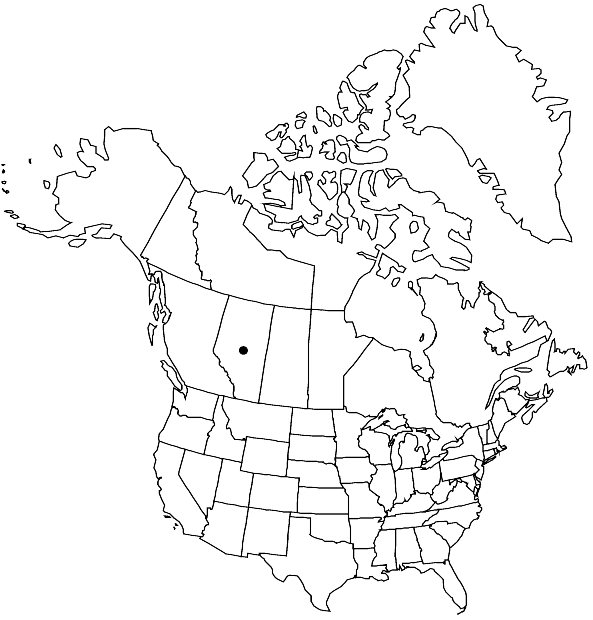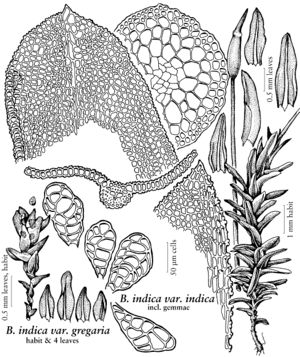familyPottiaceae
subfamilyPottiaceae subfam. Barbuloideae
genusBarbula
speciesBarbula indica
varietyBarbula indica var. gregaria
Difference between revisions of "Barbula indica var. gregaria"
Cryptog. Bryol. Lichénol. 2: 6. 1981,.
Basionym: Tortula gregaria J. Proc. Linn. Soc., Bot., suppl. 1: 29. 1859
Treatment appears in FNA Volume 27. Treatment on page 533.
FNA>Volume Importer |
FNA>Volume Importer |
||
| Line 8: | Line 8: | ||
|basionyms={{Treatment/ID/Basionym | |basionyms={{Treatment/ID/Basionym | ||
|name=Tortula gregaria | |name=Tortula gregaria | ||
| − | |authority= | + | |authority= |
| + | |rank=species | ||
|publication_title=J. Proc. Linn. Soc., Bot., suppl. | |publication_title=J. Proc. Linn. Soc., Bot., suppl. | ||
|publication_place=1: 29. 1859 | |publication_place=1: 29. 1859 | ||
| Line 35: | Line 36: | ||
-->{{#Taxon: | -->{{#Taxon: | ||
name=Barbula indica var. gregaria | name=Barbula indica var. gregaria | ||
| − | |||
|authority=(Mitten) R. H. Zander | |authority=(Mitten) R. H. Zander | ||
|rank=variety | |rank=variety | ||
| Line 49: | Line 49: | ||
|publication year= | |publication year= | ||
|special status= | |special status= | ||
| − | |source xml=https://jpend@bitbucket.org/aafc-mbb/fna-data-curation.git/src/ | + | |source xml=https://jpend@bitbucket.org/aafc-mbb/fna-data-curation.git/src/f50eec43f223ca0e34566be0b046453a0960e173/coarse_grained_fna_xml/V27/V27_767.xml |
|subfamily=Pottiaceae subfam. Barbuloideae | |subfamily=Pottiaceae subfam. Barbuloideae | ||
|genus=Barbula | |genus=Barbula | ||
Revision as of 21:05, 16 December 2019
Leaves broadly ovate, margins plane. Specialized asexual reproduction by massive, brown, elliptic to spheric, many-celled gemmae occurring singly or very few together in distal leaf axils, of up to 50 cells, 95–300 µm.
Habitat: Soil
Elevation: moderate elevations (1600 m)
Distribution

Alta., Mexico, West Indies (Dominican Republic), Central America (Panama), South America (Colombia).
Discussion
Variety gregaria is known in the flora area from only two, nonfruiting collections (see R. H. Zander 1979). The costa in the Alberta collection ends before the rounded apex; Mexican specimens generally have, however, apiculate leaves like those of the typical variety.
Selected References
None.
Lower Taxa
None.
